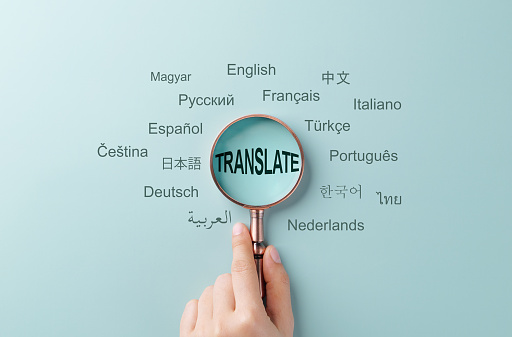Global Language Access Compliance: Complete Guide (2025)
Everything you need to know about language access regulations across 15+ countries
What is Language Access Compliance?
Language access refers to providing services and information so that people with Limited English Proficiency (LEP) or who are Deaf or Hard of Hearing (D/HoH) can understand and participate effectively, regardless of their primary language or communication mode.
Quick Overview: Global Compliance Landscape
Learn how InterMIND helps with compliance through real-time interpretation and multilingual support.
🌍 Countries at a Glance
| Region | Country/Law | Standard | Status | Deadline |
|---|---|---|---|---|
| 🇺🇸 North America | USA - ADA Title II | WCAG 2.1 AA | ✅ Active | April 2026/2027 |
| Canada - Bill 96 | French priority | ✅ Active | June 2025 | |
| 🇪🇺 Europe | EU - EAA | EN 301 549 | ✅ Active | June 28, 2025 |
| UK - PSBAR | WCAG 2.1 AA | ✅ Active | Ongoing | |
| 🇦🇺 Oceania | Australia - DDA | WCAG 2.1 AA | ✅ Active | Ongoing |
| New Zealand | WCAG 2.1 AA | ✅ Active | July 2019+ | |
| 🇯🇵 Asia | Japan - JIS X8341-3 | WCAG 2.0 AA | ✅ Active | Updated 2024 |
| South Korea - KWCAG | WCAG 2.1 AA | ✅ Active | Ongoing | |
| India - RPwD Act | National standards | ✅ Active | Ongoing |
📍 Regional Breakdown
🇺🇸 United States
ADA Title II Final Rule (April 2024)
Who must comply:
- State and local governments
- Public entities with 50,000+ residents
- Special district governments
Requirements:
- Websites and mobile apps must meet WCAG 2.1 Level AA
- Real-time captioning & subtitles for government meetings
- Live text-to-speech translation for visually impaired
- Multilingual language support for non-English speakers
Deadlines:
- April 24, 2026 – Municipalities with 50,000+ residents
- April 24, 2027 – Smaller municipalities (under 50,000) and special district governments
Penalties:
- ⚠️ Risk of legal action under the ADA
- ⚠️ Loss of federal funding for non-compliance
Additional Federal Laws:
- Title VI of Civil Rights Act (1964) – Prohibits discrimination based on national origin
- Section 1557 of Affordable Care Act – Healthcare language access
- Executive Order 14224 (2025) – Revoked EO 13166 but underlying laws remain
Note: Despite Executive Order 14224 designating English as "official language," Title VI and other statutes requiring language access remain in full effect.
🇨🇦 Canada
Quebec - Bill 96 (June 2022)
Who must comply:
- Businesses operating in Quebec
- Municipalities and public services
- Digital platforms serving Quebec residents
Requirements:
- Prioritize French communications
- Real-time French translation for multilingual meetings
- Captions & transcripts in French, English, and other languages
- Text-to-speech options for visually impaired
Deadline:
- June 2025 – Full compliance required
Penalties:
- 💰 Fines up to $30,000 CAD per infraction
- 🚫 Loss of government contracts
- 🔒 Operational restrictions
Federal - Accessible Canada Act (ACA)
- Requires federally regulated organizations to make websites/apps accessible by 2024
- Provincial laws extend to public sector and some private organizations
Provincial Requirements:
- Ontario (AODA): Applies to organizations with 20+ employees, fines up to $100,000 CAD
- Quebec: New accessible website regulation expected
- British Columbia: Applies to public sector and specific service providers
🇪🇺 European Union
European Accessibility Act (EAA) - EN 301 549
Scope:
- All 27 EU member states
- Applies to businesses with 10+ staff and €2M+ turnover
- UK businesses serving EU customers must also comply
Who must comply:
- Public and private digital services
- E-commerce platforms
- Customer service interactions
- Banking and financial services
- Transportation and ticketing
Requirements:
- Meet EN 301 549 standard (incorporates WCAG 2.1 AA)
- Live captions & subtitles for hearing impaired
- Text-to-speech for visually impaired
- Multilingual translation support
Deadline:
- June 28, 2025 – Became law (already in effect)
Penalties:
- Fines vary by member state
- Legal action for non-compliance
- Operational restrictions in the EU
- Ireland: Potential jail time for serious violations
- Germany: Significant monetary penalties
Impact on US Companies:
- If you serve EU customers, you must comply (similar to GDPR)
- Enforcement focuses on services targeting EU users
🇬🇧 United Kingdom
Public Sector Bodies Accessibility Regulations (PSBAR) 2018
Who must comply:
- Public sector organizations
- Schools, councils, healthcare providers, universities
- Government agencies at all levels
Requirements:
- Websites and mobile apps must meet WCAG 2.1 Level AA (now transitioning to WCAG 2.2)
- Publish and maintain accessibility statements (updated annually)
- Prerecorded videos require captions within 2 weeks of publication
Status:
- ✅ Active since 2018
- 🔄 Monitoring began in 2020
- 📊 16,482 accessibility issues fixed (2022-2024 report)
Penalties:
- Legal action under Equality Act 2010
- Enforcement by Government Digital Service (GDS)
- Reputation damage and public scrutiny
Equality Act 2010
- Prohibits discrimination based on disability
- Applies to both public and private sectors
- Covers digital content accessibility barriers
Note: While UK left EU, businesses serving EU customers must still comply with EAA.
🇦🇺 Australia
Disability Discrimination Act 1992 (DDA)
Who must comply:
- Government agencies
- All organizations serving the public (including private businesses)
- Broadcasting services
Requirements:
- Comply with WCAG 2.1 Level AA
- Broadcasting Services Act (1992): All TV programs 6am-midnight must have captions
- Subscription TV: 90% captioned content on primary channels
Key Standards:
- Web Accessibility National Transition Strategy (NTS): Mandates WCAG 2.2 AA
- ICT Procurement Standard (2016): Government ICT purchases must be accessible
- EN 301 549: Adopted for ICT procurement
Penalties:
- Legal action through Australian Human Rights Commission
- Federal Court damages (historical cases: $20,000 AUD)
- Complaints through conciliation process
Notable Cases:
- Bruce Maguire v SOCOG (2000): Landmark case, $20,000 damages for inaccessible Olympics website
- Gisele Mesnage v Coles (2014): First web accessibility case in Federal Circuit Court
Statistics:
- Over 4.4 million Australians (1 in 5) have a disability
🇳🇿 New Zealand
Web Accessibility Standard 1.1 (2019)
Who must comply:
- All Public Service departments
- Non-Public Service departments
- Government agencies
Requirements:
- Meet WCAG 2.1 Level AA
- Mandatory from July 1, 2019
- Self-assessment required, monitored by Department of Internal Affairs
Human Rights Act 1993
- Prohibits discrimination based on disability (Section 21(1)(h))
- Applies to government and private entities
- Does not specify technical standards (predates WCAG)
Accessibility for New Zealanders Act (In Development)
- Passed first reading August 2, 2022
- Creates Accessibility Committee led by disabled people
- Aims to address systemic barriers across all sectors
- Criticism: Advocates say it doesn't go far enough
Statistics:
- 24% of New Zealanders (1.1 million people) identify as having accessibility needs
🇯🇵 Japan
Japanese Industrial Standards (JIS) X 8341-3:2016
Who must comply:
- Government agencies (mandatory)
- Private businesses (strongly encouraged)
Requirements:
- Align with WCAG 2.0 Level AA
- Updated every 5 years (next update may include WCAG 2.2)
- Voluntary compliance for private sector
Act for Eliminating Discrimination against Persons with Disabilities
Major Update - April 2024:
- Revised law now requires all central government, public and private businesses, and universities to provide "reasonable accommodation"
- Applies to digital spaces, buildings, education, employment
Penalties:
- Fines up to ¥200,000 (~$1,700 USD) for false accessibility claims
- Legal action for non-compliance
Key Guidance:
- Everyone's Public Website Operational Guidelines (2016): Recommends JIS X 8341-3 for public sector
Statistics:
- 9.6 million people (7.6% of population) have disabilities
- 36.4 million people aged 65+ (aging population priority)
🇰🇷 South Korea
Korean Web Content Accessibility Guidelines (KWCAG) 2.1
Who must comply:
- Government agencies
- Public institutions
- Private businesses (especially essential services)
Requirements:
- Nearly identical to WCAG 2.0 Level A (all checkpoints)
- Incorporates Mobile Web Best Practices 1.0
- Supports assistive technologies
Act on Prohibition of Discrimination against Persons with Disabilities (2008, amended 2014)
Requirements:
- Reasonable accommodation for digital access
- Real-time captioning, Korean Sign Language interpretation
- Screen reader compatibility
- Accessible kiosks and self-service terminals
Recent Initiatives (May 2025):
- ₩9.2 billion allocated for accessible kiosk retrofitting
- Small business consultation programs
- Government contracts prioritize accessibility
Penalties:
- Fines up to 5 million won (~$4,000 USD)
- Legal action and reputation damage
Statistics:
- 2.7 million registered persons with disabilities (5.3% of population)
- 95% smartphone penetration – digital accessibility critical
🇮🇳 India
Rights of Persons with Disabilities Act (RPwD Act) 2016
Who must comply:
- Government bodies (mandatory)
- Private organizations providing public services
Requirements:
- Websites must support screen readers
- Provide captions and alt text
- Follow national guidelines aligned with WCAG
- Reasonable accommodation for digital services
Guidelines for Indian Government Websites (2009)
- Based on WCAG 2.0 Level A
- Mandatory for government services
- Private sector compliance voluntary but recommended
Penalties:
- Fines up to ₹5 lakh (~$6,000 USD)
- Court orders for mandatory compliance
- Exclusion from government tenders
- Public disclosure of non-compliance
Statistics:
- 21 million people with disabilities (2.1% of 1.4 billion population)
🌏 Other Countries
🇨🇳 China
- GB/T 37668-2019: National accessibility standards (updated 2019)
- Based on WCAG principles
- Government websites and public services prioritized
🇮🇱 Israel
- Equal Rights for Persons with Disabilities Law
- Requires WCAG-based national standards
- Applies to public bodies and private businesses
🇧🇷 Brazil
- Law for Inclusion of Persons with Disabilities (LBI 13.146/2015)
- Covers physical and digital accessibility
- Employer requirements and government services
🇦🇷 Argentina
- Accessibilidad Web (2010): Web-specific law
- Adheres to WCAG 2.0
🇸🇪 Sweden
- Discrimination Act (2008): Comprehensive non-discrimination law
- Covers accessibility across sectors
📊 Compliance Requirements Comparison
| Requirement | USA | EU (EAA) | UK | Australia | Japan | S. Korea | Canada (QC) |
|---|---|---|---|---|---|---|---|
| Standard | WCAG 2.1 AA | EN 301 549 | WCAG 2.1 AA | WCAG 2.1 AA | WCAG 2.0 AA | WCAG 2.1 AA | French + WCAG |
| Captions | ✅ Required | ✅ Required | ✅ Required | ✅ Required | ✅ Encouraged | ✅ Required | ✅ Required |
| Screen Readers | ✅ Yes | ✅ Yes | ✅ Yes | ✅ Yes | ✅ Yes | ✅ Yes | ✅ Yes |
| Text-to-Speech | ✅ Yes | ✅ Yes | ✅ Yes | ✅ Yes | ✅ Yes | ✅ Yes | ✅ Yes |
| Translation | ✅ Multilingual | ✅ Multilingual | ⚠️ Limited | ⚠️ Limited | ⚠️ Limited | ⚠️ Limited | 🇫🇷 French Priority |
| Public Sector | ✅ Mandatory | ✅ Mandatory | ✅ Mandatory | ✅ Mandatory | ✅ Mandatory | ✅ Mandatory | ✅ Mandatory |
| Private Sector | ⚠️ Varies | ✅ Yes (10+ staff) | ⚠️ Limited | ✅ Encouraged | ⚠️ Encouraged | ✅ Essential services | ✅ Yes |
| Max Fine | Federal funding | €20M or 4% | Equity Act | $20K AUD | ¥200K (~$1.7K) | ₩5M (~$4K) | $30K CAD |
⏰ Critical Deadlines Timeline


- June 2025 – 🇨🇦 Canada - Bill 96: Quebec French language compliance deadline
- June 28, 2025 – 🇪🇺 EU - EAA: European Accessibility Act in full effect
- April 24, 2026 – 🇺🇸 USA - ADA Title II: Large municipalities (50,000+ residents)
- April 24, 2027 – 🇺🇸 USA - ADA Title II: Smaller municipalities and special districts
🎯 How to Achieve Compliance
1. Assess Current State
- Audit existing digital properties
- Identify accessibility gaps
- Review language support
- Document findings
2. Prioritize Requirements
- Focus on applicable jurisdictions
- Identify critical deadlines
- Map legal requirements
- Assess risk levels
3. Implement Solutions
- AI-powered translation tools
- Real-time captioning systems
- Screen reader optimization
- Text-to-speech integration
4. Test & Validate
- Manual accessibility testing
- Automated WCAG scanning
- User testing with disabled users
- Multi-language verification
5. Document & Train
- Create accessibility statements
- Publish compliance reports
- Train staff on requirements
- Establish maintenance process
6. Monitor & Maintain
- Continuous monitoring
- Regular audits
- Stay updated on law changes
- Iterate and improve
💡 Key Compliance Principles
- 🌐 Universal Design: Design for all users from the start, not as an afterthought
- 🎨 Perceivable: Content must be perceivable to all senses (sight, sound, touch)
- ⚙️ Operable: Interface components must be operable by all users
- 📖 Understandable: Information must be clear and easy to understand
- 💪 Robust: Content must work with current and future technologies
- 🌍 Inclusive: Consider language, culture, and diverse abilities
❓ Frequently Asked Questions
Q: Do these laws apply if I only operate in one country?
If you serve customers or users in a country with accessibility laws, you must comply with that country's requirements—even if your business is based elsewhere. The EU's EAA and various national laws apply based on where your users are located, similar to GDPR.
Q: What's the difference between WCAG 2.0, 2.1, and 2.2?
- WCAG 2.0: Original standard, widely adopted
- WCAG 2.1: Added mobile accessibility and cognitive disabilities (most common requirement)
- WCAG 2.2: Latest version, adds authentication and interaction improvements
Meeting WCAG 2.1 Level AA generally satisfies most global requirements.
Q: Can I use automated tools to achieve compliance?
Automated tools catch ~30-40% of accessibility issues. Manual testing by accessibility experts and users with disabilities is essential for full compliance. Use automation as a starting point, not the complete solution.
Q: What are the most common compliance mistakes?
- ❌ Missing alt text for images
- ❌ Insufficient color contrast
- ❌ No keyboard navigation support
- ❌ Missing captions on videos
- ❌ Inaccessible PDFs
- ❌ No language translation options
- ❌ Outdated accessibility statements
Q: How much does compliance cost?
Costs vary widely:
- Small websites: $5,000-$20,000 initial remediation
- Medium businesses: $20,000-$100,000
- Large enterprises: $100,000-$500,000+
Building accessibility into the design process is 4-10x cheaper than retrofitting later.
Q: What happens if I don't comply?
Consequences include:
- 💰 Financial penalties (fines from $1,700 to $100,000+ or percentage of revenue)
- ⚖️ Legal action and lawsuits
- 🚫 Loss of government contracts
- 📉 Reputation damage
- 🔒 Operational restrictions
- 💸 Loss of federal/state funding
Q: Do overlays and widgets provide compliance?
⚠️ No. Accessibility overlay widgets (like accessiBe, UserWay) are controversial and do NOT guarantee compliance. Many disability advocacy groups actively oppose them. Manual remediation of code and content is required for true accessibility.
Q: How do I write an accessibility statement?
Include:
- Commitment to accessibility
- Standards you conform to (e.g., WCAG 2.1 AA)
- Known limitations
- Contact information for accessibility issues
- Last review date
- Update at least annually
🔗 Official Resources


International Standards
United States
European Union
Canada
United Kingdom
Australia
Asia-Pacific
🚀 Next Steps
Ready to Ensure Compliance?
- Audit your digital properties against WCAG 2.1 AA
- Identify applicable laws for your business locations and customer base
- Develop a remediation roadmap with clear priorities and timelines
- Implement accessibility solutions (AI translation, captions, screen reader support)
- Test thoroughly with automated tools and real users
- Document and maintain your accessibility program
Remember
Accessibility is an ongoing commitment, not a one-time project. Laws evolve, technology changes, and user needs grow. Build accessibility into your culture and processes for long-term success.
Need help with compliance? Contact InterMIND to discuss how our real-time translation platform can help meet accessibility requirements.